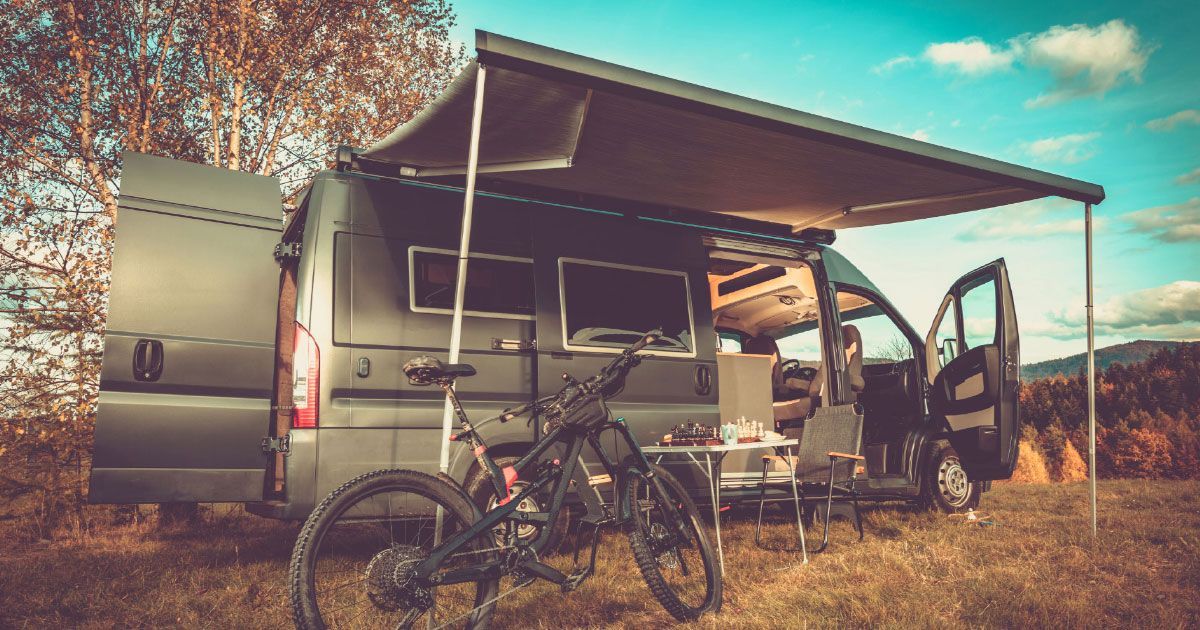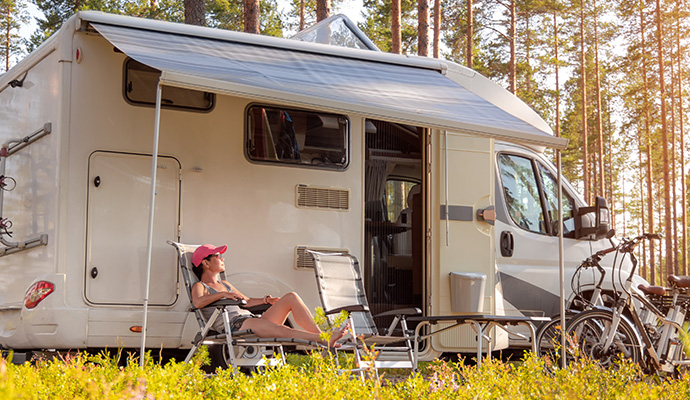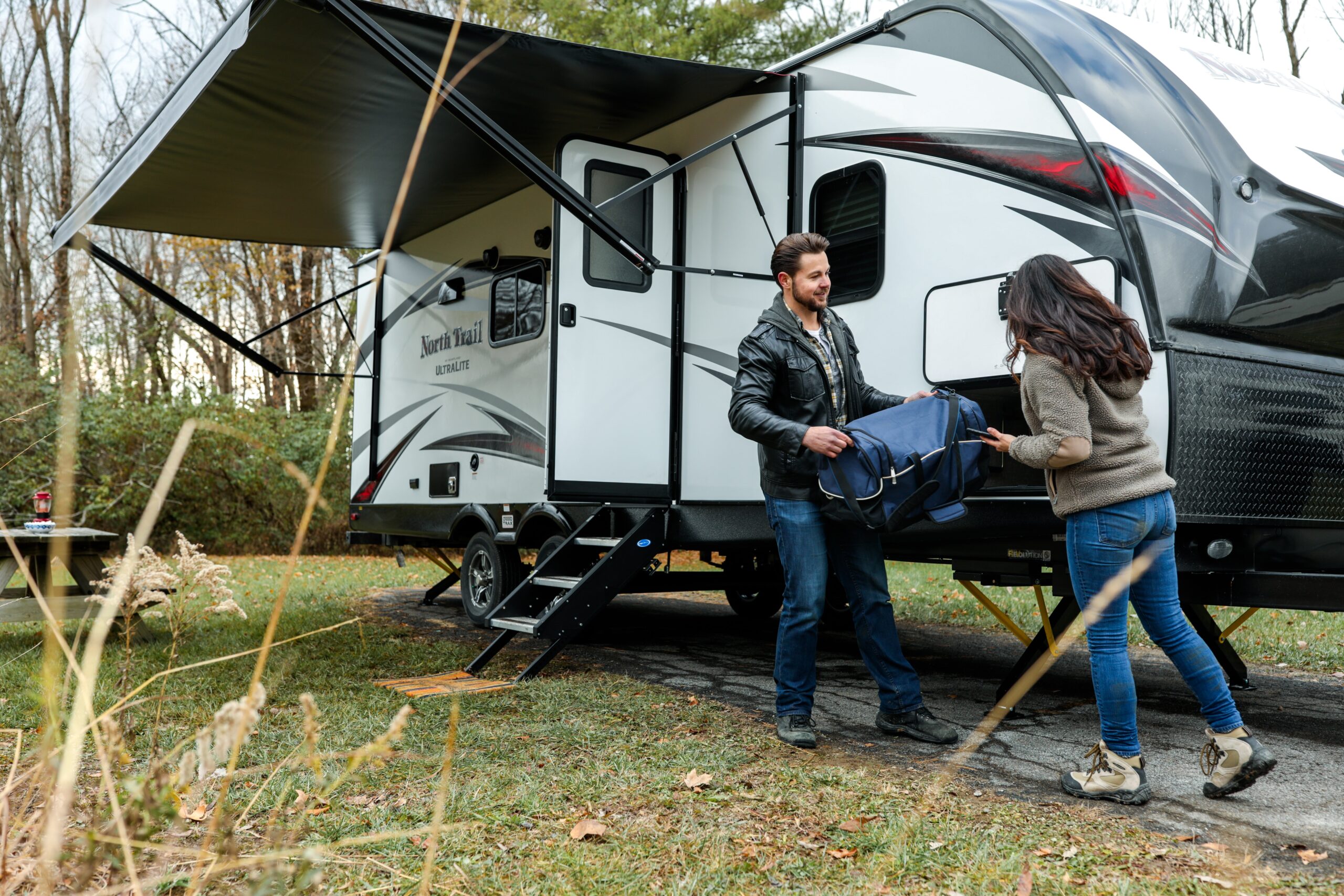All Categories
Featured
Table of Contents
- – Rv Camper Repair Near Me Riverside, CA
- – OCRV Center
- – Pop Up Camper Roof Repair Riverside, CA
- – Camper Repair Shop Riverside, CA
- – Camper Repair Near Me Riverside, CA
- – Pop Up Camper Roof Replacement Riverside, CA
- – Pop Up Camper Repair Riverside, CA
- – Camper Roof Replacement Riverside, CA
- – Camper Roof Replacement Riverside, CA
- – Pop Up Camper Repair Riverside, CA
- – Camper Repair Places Near Me Riverside, CA
- – Camper Awning Replacement Riverside, CA
- – Camper Roof Repair Near Me Riverside, CA
- – OCRV Center
Rv Camper Repair Near Me Riverside, CA
(I really did not have the locking handles tightened up down.) I really did not see anything awry, yet pulled back both awning simply to be safe. Most campers around us had their awnings released. We returned home yesterday in the rain, so today I deployed the awnings to dry them out. That's when I found that the gutter had been pulled away from the wall surface (and downspout was missing) on the right hand end of the front awning.
It shows up that about 18 to 24 inches of the steel extrusion (rainfall seamless gutter) that the awning is slid into has retreated from the wall and turned a little bit - Camper Trailer Service Near Me Riverside. I'm assuming the repair service will require changing that whole size of gutter (10 feet?) and probably utilizing larger gauge screws to change those that were taken out
We've got broken brackets on our camper awning. 2 months earlier, we had a poor tire blow-out that created a curved axle, significant repair work, and so on, and we wonder if the braces cracked/broke throughout the bouncy ride prior to we recognized the axle remained in problem. We have not had the awning out considering that it was in the store to be fixed.
Pop Up Camper Roof Repair Riverside, CA
The awning itself, spring device, etc, is fine. The back brace assembly is fine, however the front one is broken at the bottom and totally broken through at the top, so that the leading assistance arm no much longer affixes to the camper.
Does this audio reasonable? Also the real assistance arms are undamaged. They are white steel (? light weight aluminum?) and the brackets are a heavier grey steel - it's the gray little bits that have actually cracked/broken. The actual arms are entirely normal/functionalI'm just wanting to ensure we're not being absorbed out of our despair.
Camper Repair Shop Riverside, CA
The RV is a 2007, however we had rain damages in 2010 and the entire awning was brand brand-new at that time. If absolutely nothing else, we would certainly like suggestions as to how we can "jerry gear" this for a while - maybe also get us through the summer - without having to place in a brand name brand-new awning!
If we have to go awning-less, we will, yet I prefer to discover a fast and effective remedy. Anyone? Please!.
!! I'm on step 5 of replacing the roof of my '93 Fleetwood Jamboree Searcher motorhome. In order to remove the 4th one, I need to get rid of the Motor home awning.
In order to replace the rubber roofing and roofing system outdoor decking, I require to eliminate the awning. My RV awning has legs which pivot at the base yet can be eliminated to establish on the ground.
Camper Repair Near Me Riverside, CA
You'll additionally discover just how the brace is hooked on top of the trim molding that holds down the fiberglass panel in the back corner. That's why the awning requires to find off initially prior to the final actions of this post (revealing the front and back edges of the roof outdoor decking).
Below's an information of just how the awning placing brackets are screwed right into the camper. I didn't actually have to do this action till the awning was on the ground but I observed this established screw right here holding the awning canvas into the awning rail (there's one more at the right end of the awning.) I went on and loosened it.
Once both screws are removed, simply draw back on the bracket. Loosening the big lag screws that hold the RV awning installing braces to the camper (with a socket wrench) Eliminating the mounting brace once the lag screws have actually been unscrewed. Note exactly how this end was hooked over the termination bar that seals the rounded corner at the back of the roofing system.
Both lag screws removed from the awning mounting bracket on the. Removing the mounting brace of the awning.
Pop Up Camper Roof Replacement Riverside, CA
To replace the roof, this awning bar needs to be removed. If you're just replacing your awning and not repairing the whole roof covering like me, then you would not require to eliminate the awning rail.
Going down the legs a few notches to reduce the entire awning. Now I can reach this trim molding (the awning rail) quickly.
You may have to cut the end with an utility blade if it is wrapped under. Just yank it out!
As soon as the screws were out I began spying up the awning rail. (There will be some butyl tape or putty sticking it to the rubber underneath.) DIRECTS! As soon as I began to tear off the awning rail, the entire thing suddenly broke off and rolled up right into the awning like a window blind.
Pop Up Camper Repair Riverside, CA
Simply know it's coming! When the screws are eliminated, the awning rail can be pried up. You can see the edge of the rubber roofing that was secured under it. As soon as you start drawing the awning rail away it will instantly snap totally free and roll up like a home window blind with the awning.
This point is hefty so if you're working alone like me after that lower it the ground gradually by walking the legs away from the camper on each side individually up until you can lay it on the ground. I turned the legs back up and out of the method against the camper.

I leaned the legs back against the camper. Once the awning was on the ground I removed the little collection screw at the appropriate end of the awning, (I eliminated the one at the left end earlier.) These screws keep the awning canvas from sliding in the rail. Once they're removed the rail just glides straight off the canvas by moving the entire rail away.
Camper Roof Replacement Riverside, CA
When the two set screws were eliminated I can glide the whole awning rail right off the awning. Review at the profile of this trim molding (the awning rail) after it was eliminated. Woo hoo! The awning is off! The last step prior to I can get rid of the old roofing decking is to subject the ends of it where the fiberglass panels overlap it at the front and rear of the camper.
I tore them out as finest I could. The fiberglass skin over the rounded transition had some corroded staples quieting. I pried them out as best I could. The following thing holding down the rv fiberglass exterior siding panels is the corner trim molding shown here. It has a plastic screw cover strip inserted, so again I simply pried up the vinyl insert and pulled out enough so I might unscrew some screw heads.
I might finish up removing it later on if I require to change the luan plywood below this fiberglass change. To raise that, the edge molding need to be gotten rid of.
After that I could swing the trim mold off the side sufficient to raise the edge of the fiberglass panel. As soon as I could swing that item of edge molding off the side, I began to pry up the fiberglass panel. It has glue under it and little bits of rusted staples and sheared off screws still holding it in location.
Camper Roof Replacement Riverside, CA
At that factor I changed from a scraper to 6 inch broad taping blade. I loosened the other corner trim in the same way, and curved it sideways simply enough so that I can raise up the side of the fiberglass panel.
I found a lot of water damage in the plywood under the fiberglass panel so I'll most likely be changing it. Which suggests I'll finish getting rid of those edge trim items all the way down. We'll get to that later. I had a significant quantity of water damage in the joint between the rounded edge and the roofing deck.
Pop Up Camper Repair Riverside, CA
It's simply popping through the staples. The side of the roof covering decking is revealed at the back of the camper! OK! I've revealed the roof substratum at the back edge of the camper. Now its time to locate the leading edge. Very same bargain again. Eliminate some screws from the corner trim holding down the fiberglass panel.
Again, I pried that layer up as well (there wasn't much stifling yet glue at this point) and after that I could tug out the remainder of the rubber roof that was glued beneath it. Now I can take out the last bit of rubber roofing from beneath the fiberglass and luan plywood.
Camper Repair Places Near Me Riverside, CA
I saw there were no bolts holding the roof covering plywood down. I might see the blue styrofoam insulation beneath the harmed locations of luan plywood on the roofing. Notice there are no fasteners at all holding down the roofing plywood!
When I scraped up some of the damaged bits I obtained hold of a strong piece of plywood and started to pull. The whole point began to pull up easily in one piece without harming the foam board insulation at all.
There is a steel enhanced tape under that joins the assemble. I don't recognize exactly how precisely they managed to adhesive every little thing down so well and obtain this tape joining them from the underside, but it was perfectly done. The items of roof ply are collaborated at the joints underneath with a metal-reinforced tape.
Camper Awning Replacement Riverside, CA
I rapidly recognized the roof was shedding stamina and tightness as I brought up the top layer, so fractured it off right before the first seam. A close of the steel framing in the roof covering: one inch wide, one and a fifty percent inches tall. Here's an information of the electrical wiring in the insulation foam and the solid timber reinforcements where the antennas screw into the roofing system.

I located a lot of water damages in the plywood under the fiberglass panel so I'll possibly be replacing it. I had a considerable amount of water damage in the joint in between the rounded corner and the roofing deck.
The side of the roof outdoor decking is exposed at the back of the camper! I've subjected the roof substratum at the back side of the camper. Currently its time to locate the front side.
Again, I tore that layer up too (there wasn't much stifling yet glue at this factor) and after that I could pull out the remainder of the rubber roof that was glued underneath it. Camper Trailer Service Near Me Riverside. Now I can pull out the last little bit of rubber roof covering from beneath the fiberglass and luan plywood
Camper Roof Repair Near Me Riverside, CA

I discovered there were no fasteners holding the roofing plywood down. I could see the blue styrofoam insulation beneath the harmed locations of luan plywood on the roofing. Notification there are no bolts at all holding down the roofing plywood!
When I scraped up several of the busted little bits I obtained hold of a strong item of plywood and started to draw. The entire thing began to draw up cleanly unscathed without harming the foam board insulation at all. Currently I might see the steel framing beneath. Yet after that the plywood began peeling off up as one piece, leaving all the styrofoam well undamaged.
There is a steel strengthened tape under that signs up with the assemble. I do not know exactly how precisely they took care of to adhesive every little thing down so well and obtain this tape joining them from the bottom, but it was perfectly done. The pieces of roofing ply are joined together at the seams beneath with a metal-reinforced tape.
I quickly understood the roofing system was shedding strength and rigidity as I brought up the top layer, so split it off just prior to the very first seam. A close up of the metal framework in the roof covering: one inch wide, one and a half inches tall. Here's an information of the electrical wiring in the insulation foam and the strong timber reinforcements where the antennas screw into the roof.
Camper Repair Shops Near Me Riverside, CACamper Repair Shop Riverside, CA
Camper Repair Places Near Me Riverside, CA
Camper Roof Replacement Riverside, CA
Camper Air Conditioner Repair Near Me Riverside, CA
Camper Repair Riverside, CA
Camper Repair Shop Riverside, CA
Camper Air Conditioner Repair Near Me Riverside, CA
Rv Camper Repair Near Me Riverside, CA
Pop Up Camper Roof Replacement Riverside, CA
Camping Repair Near Me Riverside, CA
Camper Roof Repair Riverside, CA
Camper Repair And Service Riverside, CA
Pop Up Camper Canvas Repair Riverside, CA
Camper Awning Repair Riverside, CA
Camper Air Conditioner Repair Near Me Riverside, CA
Pop Up Camper Roof Replacement Riverside, CA
Camper Service Near Me Riverside, CA
Camping Repair Near Me Riverside, CA
Camping Repair Near Me Riverside, CA
Camper Air Conditioner Repair Near Me Riverside, CA
Pop Up Camper Repair Riverside, CA
Camper Repair Shop Riverside, CA
Camper Repair Near Me Riverside, CA
Camper Trailer Repair Riverside, CA
Camper Trailer Repair Riverside, CA
Pop Up Camper Canvas Repair Riverside, CA
Camper Trailer Service Near Me Riverside, CA
Rv Camper Repair Riverside, CA
Camper Service Center Riverside, CA
Camper Repair Near Me Riverside, CA
Pop Up Camper Canvas Repair Riverside, CA
Camper Service Near Me Riverside, CA
Camper Awning Repair Riverside, CA
Camper Repair Shop Riverside, CA
Camper Awning Replacement Riverside, CA
Camping Repair Near Me Riverside, CA
Camper Roof Repair Riverside, CA
Camper Roof Replacement Riverside, CA
Pop Up Camper Repair Near Me Riverside, CA
Camper Roof Replacement Riverside, CA
Camper Service And Repair Riverside, CA
Camper Service Center Riverside, CA
Camper Repair And Service Riverside, CA
Camper Repair Riverside, CA
Rv Camper Repair Riverside, CA
Camper Roof Repair Riverside, CA
Camper Repair Near Me Riverside, CA
Camper Repair Riverside, CA
Rv Camper Repair Riverside, CA
Camper Air Conditioner Repair Near Me Riverside, CA
Camper Services Riverside, CA
Camper Service Riverside, CA
Camper Repair Near Me Riverside, CA
Camping Repair Near Me Riverside, CA
Pop Up Camper Canvas Repair Riverside, CA
Camper Roof Replacement Riverside, CA
Pop Up Camper Canvas Repair Riverside, CA
Camper Awning Repair Riverside, CA
Camper Services Riverside, CA
Rv Camper Repair Near Me Riverside, CA
Camper Service Near Me Riverside, CA
Camper Service Riverside, CA
Camper Trailer Repair Riverside, CA
Camper Service Center Riverside, CA
Camper Service Center Riverside, CA
Camper Roof Repair Near Me Riverside, CA
Camper Awning Replacement Riverside, CA
Camper Service And Repair Riverside, CA
Camper Repair And Service Riverside, CA
Camper Roof Repair Near Me Riverside, CA
Camper Trailer Service Near Me Riverside, CA
Camper Awning Repair Riverside, CA
Camper Repair Shops Near Me Riverside, CA
Pop Up Camper Canvas Repair Riverside, CA
Camper Air Conditioner Repair Near Me Riverside, CA
Pop Up Camper Roof Repair Riverside, CA
Pop Up Camper Roof Replacement Riverside, CA
Local Seo Pricing Riverside, CA
In Seo Marketing Agency Riverside, CA
OCRV Center
Table of Contents
- – Rv Camper Repair Near Me Riverside, CA
- – OCRV Center
- – Pop Up Camper Roof Repair Riverside, CA
- – Camper Repair Shop Riverside, CA
- – Camper Repair Near Me Riverside, CA
- – Pop Up Camper Roof Replacement Riverside, CA
- – Pop Up Camper Repair Riverside, CA
- – Camper Roof Replacement Riverside, CA
- – Camper Roof Replacement Riverside, CA
- – Pop Up Camper Repair Riverside, CA
- – Camper Repair Places Near Me Riverside, CA
- – Camper Awning Replacement Riverside, CA
- – Camper Roof Repair Near Me Riverside, CA
- – OCRV Center
Latest Posts
[target:city] Local Gutter Cleaning Companies
Fontana Power Washing House
Gutter Cleaner Service Ontario
More
Latest Posts
[target:city] Local Gutter Cleaning Companies
Fontana Power Washing House
Gutter Cleaner Service Ontario